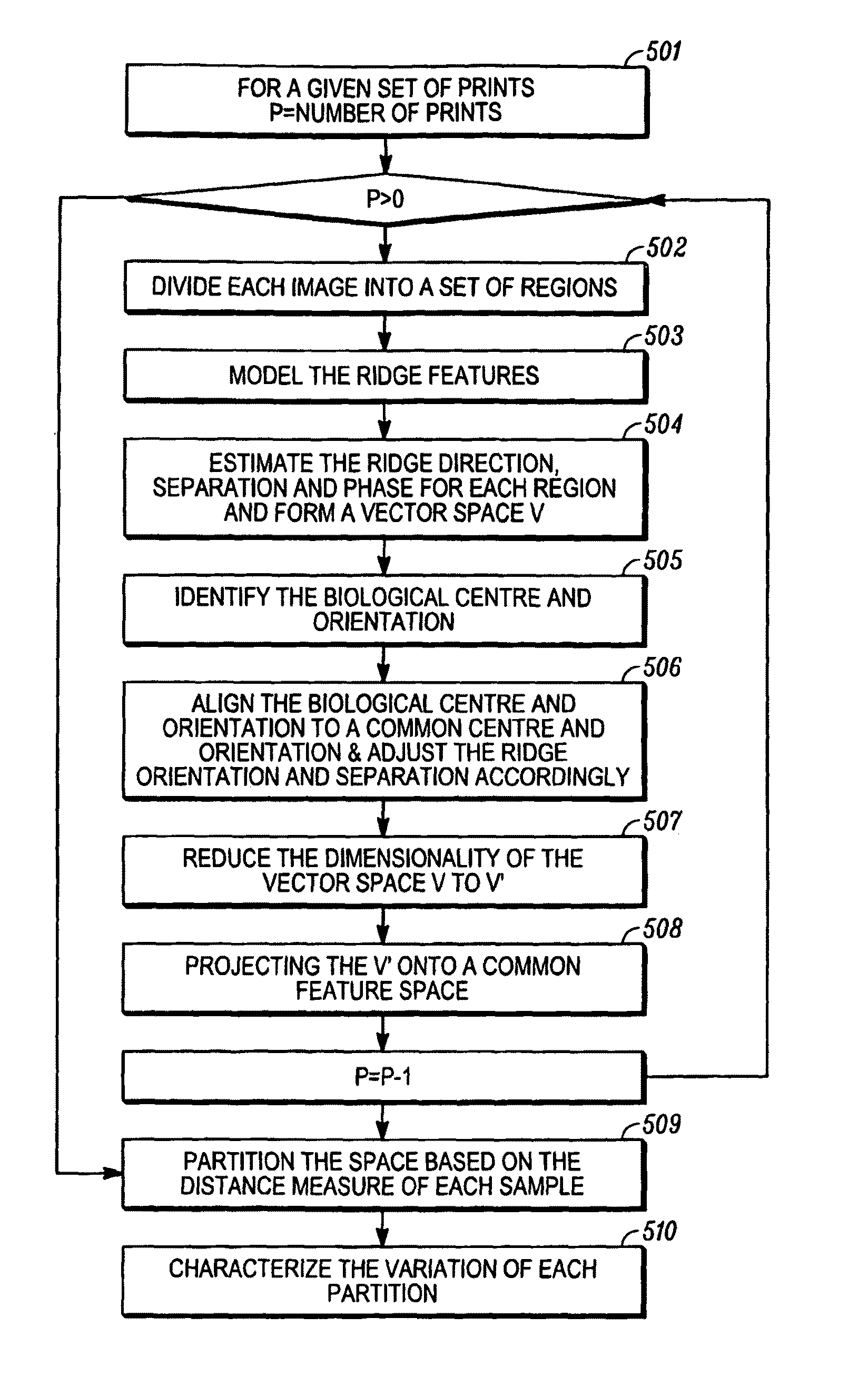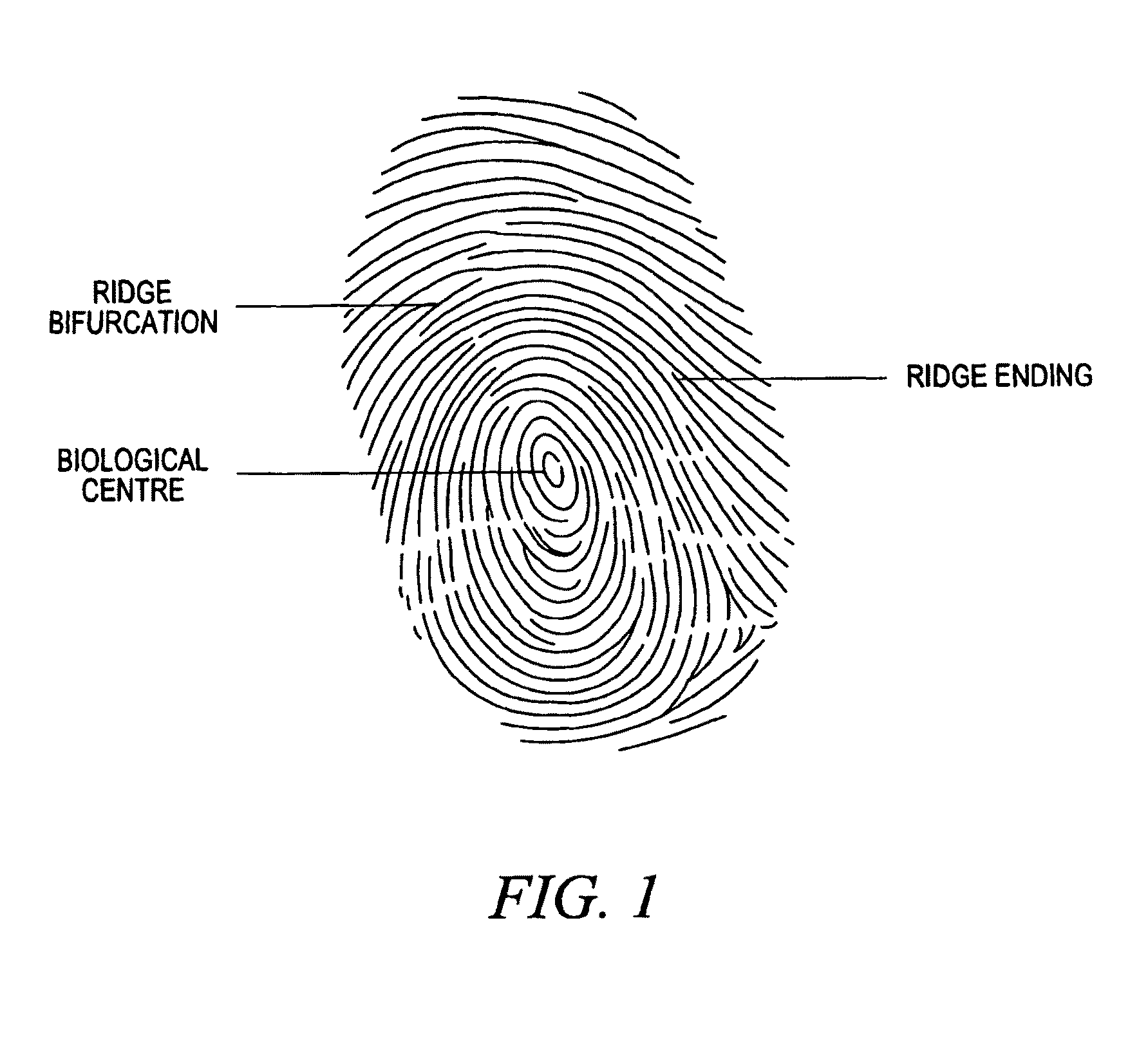Fingerprint matching method and apparatus
a fingerprint matching and fingerprint technology, applied in the field of fingerprint identification and verification methods, can solve the problems of fingerprint matching or any biometric system, affecting the measurement and matching of biometric systems, and involving the comparison of highly complex functions
- Summary
- Abstract
- Description
- Claims
- Application Information
AI Technical Summary
Benefits of technology
Problems solved by technology
Method used
Image
Examples
Embodiment Construction
[0046]The present disclosure is an image processing method, which can remove the linear and elastic geometric variation and normalize a collection of two dimensional digital images into a common framework (a canonical frame). The present disclosure also provides an image processing method for matching fingerprint images.
[0047]One exemplary embodiment of the present disclosure involves the construction of the canonical framework. Another aspect of the present disclosure involves the detection of sweat pore features from the fingerprint images. Another aspect of the present disclosure involves a nonlinear alignment method to correct elastic deformation. Another involves an enrolment procedure and the other aspect of the present disclosure involves a matching procedure.
[0048]In one exemplary embodiment of the present disclosure, a method of processing fingerprint images is provided, comprising the steps of, for each image to be processed, justifying the image by translation and / or rota...
PUM
 Login to View More
Login to View More Abstract
Description
Claims
Application Information
 Login to View More
Login to View More - R&D
- Intellectual Property
- Life Sciences
- Materials
- Tech Scout
- Unparalleled Data Quality
- Higher Quality Content
- 60% Fewer Hallucinations
Browse by: Latest US Patents, China's latest patents, Technical Efficacy Thesaurus, Application Domain, Technology Topic, Popular Technical Reports.
© 2025 PatSnap. All rights reserved.Legal|Privacy policy|Modern Slavery Act Transparency Statement|Sitemap|About US| Contact US: help@patsnap.com



